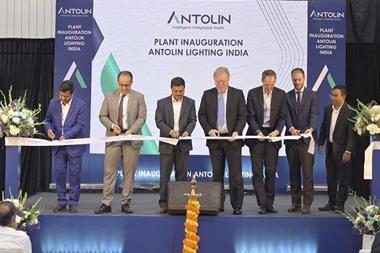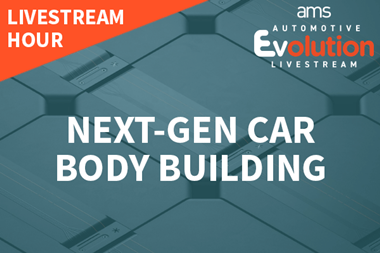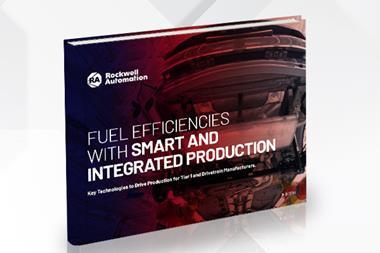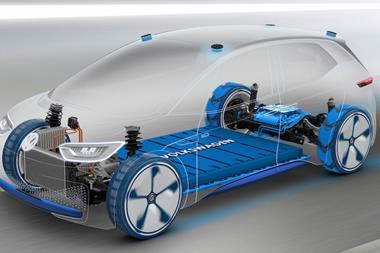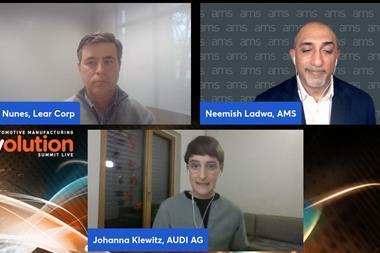
Steed Webzell reviews advanced digital reality technologies available for automotive manufacturers looking to expedite product development
For modern automotive manufacturers who must deliver high levels of innovation and flexibility in shorter cycles at the lowest cost and highest quality, digital manufacturing tools present a significant opportunity to improve productivity, streamline compliance and provide visibility throughout the product development life cycle.
Among the many innovative software offerings in this marketplace is aesthetica, from Icona Solutions, which simulates and visualises, in real time, the effects that geometric variations (positional changes, twisting, buckling) caused by manufacturing and assembly processes will have on the perceived quality of the exterior and/or interior of a new vehicle. In simple terms, the software works by combining tolerance analysis and stack-up capabilities with 3D visualisation tools. It can be used as early as concept design stage to set gap and flush targets to be achievable and validated as the design phase progresses.
Icona says that aesthetica 3D ‘virtualisation’ software is in successful use at OEMs around the world, including at Nissan Design Europe’s headquarters in London, where it enabled Qashqai development teams to uncover issues that almost certainly would not have been discovered otherwise. The story is similar in the design and development of the Opel Insignia at General Motors’ International Technical Development Centre in Rüsselsheim, Germany and at Fiat Group, where aesthetica is part of its overall product lifecycle management (PLM) software environment.
By using the software to apply information on tolerances and locator schemes directly to the 3D digital model of a vehicle, Fiat is able to simulate and visualise, in real time, their effects on components and assemblies in terms of form and position variation, and component deformation. What’s more, root cause analysis allows the company to diagnose the cause and try out what-if? solutions.
 The latest version of aesthetica (v4) includes a new 3D visualisation system supporting high dynamic range (HDR) environments; lighting and shadows; an extended material library; and a new, geometry-based measurement system. Like all technologies, digital manufacturing relies on new functionality as each vendor vies for market share. With this in mind, Factory Design Suite 2013 from Autodesk has improved layout design efficiency by automatically chaining assets together based on a 2D path or polyline because certain factory assets, like fences, conveyors and guard rails tend to naturally follow a specific path. When the 2D drawing is synchronised with Inventor, the corresponding 3D assets are populated automatically on to the 2D path. Similarly, when the 3D model is synchronised back to AutoCAD, the original path is replaced by a detailed representation of the assets in the chain.
The latest version of aesthetica (v4) includes a new 3D visualisation system supporting high dynamic range (HDR) environments; lighting and shadows; an extended material library; and a new, geometry-based measurement system. Like all technologies, digital manufacturing relies on new functionality as each vendor vies for market share. With this in mind, Factory Design Suite 2013 from Autodesk has improved layout design efficiency by automatically chaining assets together based on a 2D path or polyline because certain factory assets, like fences, conveyors and guard rails tend to naturally follow a specific path. When the 2D drawing is synchronised with Inventor, the corresponding 3D assets are populated automatically on to the 2D path. Similarly, when the 3D model is synchronised back to AutoCAD, the original path is replaced by a detailed representation of the assets in the chain.
Digital manufacturing has a key role to play in PLM environments, as Jaguar Land Rover (JLR) can confirm after opting to partner with Dassault Systèmes (DS) to deploy Version 6 of its 3D ‘Experience’ platform in a business transformation programme called iPLM, designed to enhance innovation and reduce development time. “Many business users fail to understand the end-to-end power of PLM, they see it as a data management system rather than a business transformation (BT) tool, as IT rather than BT,” says Paul Davies, JLR’s director of product development operations. “The immediate benefit of creating, seeing, experiencing and sharing data in a Version 6 environment is translating into time savings of up to 40% for some specific roles in product development.”
JLR iPLM covers the entire vehicle definition and features across 14 domains. These include bills of material, parts and assembly, requirements and verification, plus in-vehicle embedded software, which accounts for 60% of new car development.
“As design progresses, Version 6 simulates and validates JLR production environments virtually, including buildings, production cells and technicians,” says John Knight- Gregson, iPLM programme lead at JLR. “Simulated digital representations enable optimisation of our production environments; 3D digital factory overviews, coupled with highly detailed machining operations allow us to make further efficiencies. It also values fitted parts in real time, providing an accurate business cost of each vehicle made.” Hyundai Motor Co/Kia Motors Corp is also keen on PLM technology, and has recently completed the first deployment phase of its PTC Windchill PLM system.
The company intends to consolidate multiple existing systems into a single platform for managing critical product data and related processes for vehicle development. A system of record will be created that will include design data from a range of different systems including CATIA and Pro/ ENGINEER (now Creo). In addition, Windchill will also help handle the complexity caused by the increasing number of vehicle change management requests and, furthermore, provide a digital mock-up environment.
 PTC has, in fact, become the latest to confirm its support for a new global automotive industry initiative called the Codex of PLM Openness (CPO). Being co-ordinated by the Germany-based ProSTEP iViP Association, the CPO aims to foster industry agreement on best practices for open, interoperable PLM and related solutions for the auto industry. Among other vendors to partner the ProSTEP initiative are DS and Siemens PLM.
PTC has, in fact, become the latest to confirm its support for a new global automotive industry initiative called the Codex of PLM Openness (CPO). Being co-ordinated by the Germany-based ProSTEP iViP Association, the CPO aims to foster industry agreement on best practices for open, interoperable PLM and related solutions for the auto industry. Among other vendors to partner the ProSTEP initiative are DS and Siemens PLM.
Siemens PLM, of course, also enjoys DM success around the world, with its Tecnomatix suite and, realising that the use of production planning software could help achieve efficiency gains, VW engineers in Wolfsburg, Germany carried out a comprehensive benchmarking process. “In the areas of body production, logistics and machine and equipment planning, Siemens PLM Software came out on top with Tecnomatix,” explains Carsten Macke, the person responsible for digital factory implementation within planning at Volkswagen AG.
Since implementation of Tecnomatix, VW says planning has become much simpler and more precise. For example, planners can now drag-and-drop a robot into a planning scenario where it is seen immediately within the 3D plant layout. If it’s too far from a jig, it can easily be moved closer. In addition, Tecnomatix answers what-if questions such as ‘what would happen if we placed eight robots in a station instead of four?’
 Of course, digital manufacturing is not always an enterprise- or even department-wide solution, but can in fact be deployed at many function-specific levels. A case in point can be seen at Futuris Automotive Interiors, which has selected Seat Design Environment (SDE) from Siemens PLM to develop seat trim covers. SDE enables engineers to capture a complete digital product definition of a seat system, which shares design detail, reduces the need for physical prototyping and cuts time-to-market. Futuris plans to use SDE for all new programs in North America, China, Australia and Thailand.
Of course, digital manufacturing is not always an enterprise- or even department-wide solution, but can in fact be deployed at many function-specific levels. A case in point can be seen at Futuris Automotive Interiors, which has selected Seat Design Environment (SDE) from Siemens PLM to develop seat trim covers. SDE enables engineers to capture a complete digital product definition of a seat system, which shares design detail, reduces the need for physical prototyping and cuts time-to-market. Futuris plans to use SDE for all new programs in North America, China, Australia and Thailand.
Brian Thiele, engineering and development manager at Futuris akes the saultory point that: “Based on our evaluation, we believe that SDE will enable us to save perhaps as much as two weeks in the development of initial flat patterns.”





























